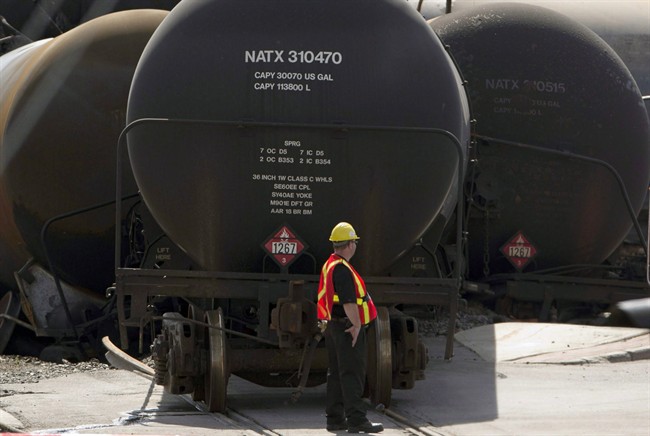OTTAWA – A government-commissioned rail safety working group says not enough has been done to ensure the safety of tank cars used to transport crude oil through Canadian communities.

With the House of Commons shut down for a weeklong break, Transport Canada quietly posted three reports late Friday that were given to Transport Minister Lisa Raitt on Jan. 31.
The reports deal with classification issues for flammable products, emergency response issues and means of containment.
Much of the focus since last July’s deadly train crash in Lac-Megantic, Que., that killed 47 people has focused on the older tank cars carrying highly volatile crude oil.
Industry groups have been pushing governments for years to improve the safety standards of the cars, known as DOT-111s, and last month Canada and the United States moved in concert to regulate higher standards.
Read More: Would you want these rail cars rolling through your backyard?
Those new standards, however, simply reflected a voluntary industry code that had already been in place since 2011.
The working group report says that “regulators, industry, car builders and shippers can go further.”
- Posters promoting ‘Steal From Loblaws Day’ are circulating. How did we get here?
- Canadian food banks are on the brink: ‘This is not a sustainable situation’
- Video shows Ontario police sharing Trudeau’s location with protester, investigation launched
- Solar eclipse eye damage: More than 160 cases reported in Ontario, Quebec
An interim recommendation says Transport Canada should review train operations involving shipments of crude oil that use current tank car models.
It says retrofitting or retiring older DOT-111 tanks cars needs to be a priority and is recommending a speedy study on how quickly a retrofit of the older cars could be performed.
In the longer term, Transport Canada needs to review new calls by the American Association of Railroads “requiring an even higher standard of design safety of DOT-11 new-build tank cars.”
The report says there are about 228,000 DOT-111 tank cars currently in service in North America, with about 92,000 carrying flammable liquids. Cars built since 1974 have a 50-year lifespan.
Since the rail industry voluntarily started building better tank cars in 2011, about 26,000 have been put into service, according to the report. That should rise to 44,700 tank cars this year and 52,500 in 2015.
The working group included the Association of American Railroads, the Federation of Canadian Municipalities, Canadian Pacific and Canadian National railways and the Teamsters Union of Canada, among others.



Comments